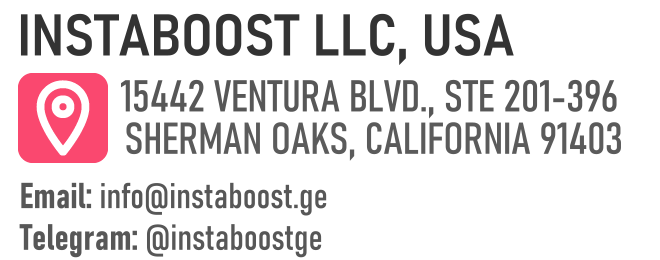How to Know If Someone Deleted Their Instagram Account?
A disappearing profile can signal deletion, deactivation, or a change in privacy settings. Begin with simple checks and compare what was visible yesterday to what you see today to spot consistent absence of posts, username, and profile image. A quick review within the first hour after noticing the change often clarifies whether it is a temporary glitch or a deliberate action. Use these observations to decide on timing and next steps with confidence.
Start With Signals, Not Assumptions
When a profile disappears, the fastest way to tell if someone deleted their Instagram is to stack a few small, verifiable signals instead of jumping to conclusions. Profiles can look “gone” for several reasons – account deletion, temporary deactivation, a username change, privacy shifts, or even a short-lived outage – so the job is to narrow the field with a quick, clean timeline. Start with what you control. Update your app, try a second device, and check a browser view. If the account truly no longer exists, you’ll see consistent “User not found” behavior across those touchpoints, links to old posts break, and mutual followers won’t see the handle either.
If they blocked you, an alt or a trusted collaborator can still surface the profile. If they changed the username, older tags and DMs may reveal the new handle, and patterns you’ve picked up while trying to get noticed on Instagram can help you sanity-check whether it’s a visibility wobble or a true disappearance get noticed on Instagram without overreacting to a transient glitch. This is where smart tools help. A reputable social listening platform or a lightweight username tracker can confirm handle changes and retention signals without guesswork, especially when you’re managing creator collabs or running targeted promotion.
Keep clean analytics on saved posts, story mentions, and real comments to see whether engagement dropped because the account is gone or because visibility shifted. The non-obvious insight is timing. In the first hour after a disappearance, caches and search can lag, so measure across sources twice – once immediately and once after a short interval – before making outreach or pausing campaigns. That testing loop protects spend, preserves early momentum, and keeps your decision matched to intent, whether you’re a casual user or monitoring a brand partnership.

Proof Beats Panic: Build a Quick Evidence Stack
We ditched best practices and found traction. The quickest way to check if someone actually deleted their Instagram is a 10-minute mini audit that leans on repeatable signals over hunches. Start by anchoring what you last saw and when – stories expire, usernames change, and privacy flips can hide a profile without removing it.
Then run the same search in three places: your app, a second device, and a clean logged-out browser tab. If the profile link shows a generic “page not found” in all three, that’s strong convergence. If it loads while logged out but not in-app, you’re likely blocked or gated by privacy.
Look at mentions and tags on mutuals’ posts. If the @handle resolves to a blank tag or forwards to a new name, that points to a rename, not deletion. For brand and creator teams, add light analytics. Did their comments disappear from your recent posts, or do they remain while the profile is unreachable? Legacy comments that persist with a dead profile often mean a temporary deactivation. If you use paid social monitoring or a reputable listening tool, or even routine checks around an Instagram follower service, set a short watch window – 24 to 48 hours – to see if the handle reappears.
Many deactivations are brief. This is where smart tools help. Qualified trackers plus a clean timeline beat doom-scrolling. The crisp insight is this: the only hard deletion tell is consistency across contexts – the same error state on multiple devices, networks, and a logged-out browser, sustained over time. Everything else is a reversible state change. Work from that frame and you avoid false calls while staying ready with clear next steps.
Decide the Decision: Build a 24-Hour Checkpoint
When everything is urgent, nothing is strategic. Treat the disappearing-profile moment as a simple 24-hour checkpoint that helps you sort a true deletion from a deactivation pause or plain noise. Set T0 as the first minute you notice the change. By T+10 minutes, wrap a quick mini audit and log what you see: search visibility in the app, on a second device, and in a clean logged-out browser. Note the last known username, public versus private status, and whether mutuals can still see the handle.
At T+2 hours, add two retention signals. Check if the handle still appears in your DMs, since old threads often keep names even when profiles are deactivated, and whether tagged photos still show a ghost tag. If both vanish across environments, you’re leaning toward deletion. If DMs keep the name but the profile will not load, that points to deactivation or a privacy change, and in the background remember that vanity metrics such as buy likes for posts on Instagram won’t clarify account state.
At T+12 hours, try again from a different network and a web proxy location to rule out regional outages. At T+24, line up the timeline. Three consistent no-loads, no tags resolving, no username redirect, and no mutual visibility is your strongest organic proof without contacting support. If the account matters commercially – creator collabs, customer care, or brand safety – pair this checkpoint with clean analytics. Look for referral clicks falling to zero, halted story mentions, and real comments referencing a vanishing handle. If speed is critical, a small, well-targeted promotion or a social listening tool from a reputable, qualified vendor can raise signal quality when it is matched to your scope and measured against your evidence stack. This cadence helps you avoid overreacting to a username change and keeps you focused on actionable proof for how to know if someone deleted their Instagram.
Pause the Narrative: Don’t Let One Vanish Rewrite the Story
This might not look like progress, but it could be. If your mini audit says the profile is gone, wait for your 24-hour checkpoint before you turn that into a verdict. Instagram is noisy. Deactivations, username swaps, privacy toggles, and shadow-mitigations can all look like deletion, especially if you’re relying on one view in one app. Treat the gap as a test of your process, not your emotions. Re-run the same three-way search at T+60 and T+360 using your app, a second device, and a clean logged-out browser.
Add one controlled variable: search the exact username string and a past post caption fragment on Google with site:instagram.com, and remember that distribution tactics, including ways to enhance story reach on Instagram, can be revisited later if the signal clarifies. If they changed their handle, you’ll often find older cached snippets that confirm continuity without spinning up theories. If you’re managing campaigns or creator collabs, keep momentum by shifting to retention signals you can control. Reroute ad spend to posts with real comments, pulse a targeted promotion on another channel, and tag a backup creator while you wait for clarity. Qualified social listening tools work when matched to intent – use them to track mentions and handle edits, not to overfit one datapoint.
Keep clean analytics. A simple log of time-stamped searches and outcomes stops ghost chasing and gives you a baseline if you escalate to support. The crisp insight is this: loss of visibility is not the same as loss of existence. When you separate the narrative from the signal, you buy enough accuracy to decide smartly – whether that means pausing, pivoting, or confirming a real deletion.
Close the Loop: Turn Uncertainty into a Repeatable Signal
Your voice just got sharper. Use it. Treat the 24-hour checkpoint as the shift from suspicion to signal, then act with intent. If your mini audit and the follow-up window both point to a missing profile, you have a working answer to “how to know if someone deleted their Instagram” and a clean process you can reuse. Log the outcome with context – last seen post cadence, messaging receipts, mutuals’ visibility, and any username changes you noticed. That record isn’t busywork.
It helps you separate deletion from deactivation and keeps you from rewriting your story based on one glitchy screen. If the profile resurfaces, update the note and tighten your inputs next time. A second device, a clean browser, and a quick search-operator check (site:instagram.com username) improve reliability. When the stakes are commercial – brand monitoring, creator vetting, retention signals – pair this calm timeline with tools that match your goals; social listening for early momentum, targeted post sharing on Instagram when distribution is the bottleneck, and analytics that keep you honest.
Paid accelerants work when they’re calibrated to intent and backed by real comments, creator collaborations, and a testing loop that flags false positives. If you still need confirmation, ask directly with a light touch or check mutuals. Social proof often travels faster than platform notices. The crisp insight stands: uncertainty is a cost you can budget down. A simple, repeatable protocol turns shaky moments into actionable data, so whether a profile is truly gone or just on pause, you move on with clarity and save your attention for the next smart decision.















